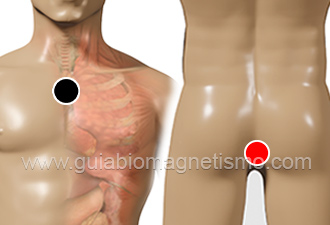HIV - Aids
Type: Virus
Pairs
thymus - rectum
kidney - renal capsule
index - index (Rsv)
urethra - urethra (Rsv)
gallbladder - gallbladder (Rsv)

Generalities:
Acquired immunodeficiency syndrome. It is characterized by a depressed immune system presumebly caused of the presence of the virus called HIV.
It can be asymptomatic for an indefinite period of time or present the typical symptoms such as kaposi's sarcoma or diverse opportunistic diseases (pneumonia). This syndrome affects various systems: respiratory, gastrointestinal, urogenital, etcetera.
Transmission
Sexual transmission, by blood (transfusion, infected syringes) or from mother to child at the time of delivery or during lactation.
top of page

